#marine parks
Note
do you genuinely support seaworld? because if you do, then that is genuinely disapointing to me as i loved your content. dolphins (esp bottlenoses) are incredibly intelligent creatures with their own languages and cultures, can experience emotion in the same ways we do, and display self awareness on nearly the same level as us. there's no situation in which they should be kept in and bred in captivity, and dolphins that cannot live in the wild deserve to go to sanctuaries that are able to provide actual proper living space, respect, and care for them. they are real, living creatures, with their own personalities and identities. they shouldnt be abused and exploited for profit. it's inherently cruel, even if you personally dont view them as their own people as some (like me) do.
I'm sorry that you're disappointed. I thought I had been clear about my opinions on here but yes, I do support SeaWorld, just like I support every other AZA-accredited zoo and aquarium. I support their veterinarians and veterinary staff, people I've actually met or who have worked closely with many of my colleagues and mentors. I support their rescue teams, which have responded to over 40,000 individual marine animals in distress, and are currently one of only half a dozen facilities equipped to handle the Florida manatee unusual mortality event. I support their husbandry and training staff, folks who've made a career out of caring for animals and, like the trainers I currently work with, tirelessly advocating for their needs. I support their contributions to marine research, both through the parks and the independent Hubbs-SeaWorld Research Institute. I support the connection to the marine world that they provide children (and adults) like myself years ago, gifting them with a lifelong love for the ocean and its life.
At the moment, I'm completing a residential internship program with the medical team at a small marine park (not SeaWorld, but similar in many ways) as a complement to my ongoing education as a DVM student. I see and work with dolphins every day. You’re right, they are extremely intelligent. Each one is an individual, with his or her own distinct personality, likes and dislikes, best friends (human and dolphin), and favorite activities. Perhaps they are “people” in their own way, although from a scientific perspective I can’t anthropomorphize them to that extent. Their trainers are more intimately familiar with the dolphins’ moods and needs than the vast majority of people are with their own pets (speaking as a 7-year veteran of general practice and emergency vet hospitals), and every second of their work day revolves around the animals, be it enrichment, training, husbandry, diet prep, habitat maintenance or, yes, public presentations. Each dolphin has a specialized care plan, made for them by their own full-time veterinarian, to ensure they are always in peak body condition. They receive a full routine medical work-up (complete with bloodwork, fecal, urine, gastric, and chuff cytology) multiple time a year, far beyond what any domestic animal receives. Their diet consists of a wide variety of human-grade seafood, with each individual fish (hundreds of pounds a day) hand-checked by a trainer to ensure it has no defects. They are never, ever forced to participate in a session and usually happily do so, because exercising their minds and bodies is enriching for them. If not, no big deal, they will still get all the food they need.
About half of our dolphins are rescues, deemed non-releasable by the federal government (not the team who rehabbed them, or even the “higher ups” in aquarium/marine park management). These dolphins stranded when they were babies, too young to have learned what they needed from their mothers, or suffering from disabilites or chronic health conditions that would make survival in the wild impossible. Without “captivity,” they would be dead. Instead, I get to see them thrive every day, bonding with their trainers, playing with their dolphin friends, exploring their enrichment, and inspiring everyone who meets them. I’m sorry but no, I will never say these dolphins should be put to death or left to suffer an excrutiating fate in the wild. Not when I’ve seen the life they get to live instead.
An accredited “dolphin sanctaury” like you suggest, run by people with the proper training, resources, and (extensive) funding to care for these complex animals, does not exist. And if one did, it would be no different than any other accredited facility (many of which are “sea pen” habitats, which have their own pros and cons versus a traditional “tank” habitat) that is already open. There would still be training for husbandry, exercise, and enrichment. There would still be hand-fed diets. There would still be (nearly constant!) breeding behavior, just without any babies. And there would still be barriers keeping them from leaving although fun fact, the US Navy uses trained dolphins in open ocean missions and they always return to their human caregivers. The only thing missing would be the educational, inspirational experience aquariums give the public.
But don’t take my word for it. Last year, the Cetacean Welfare Study was published, the result of years of work by 43 different AZA and/or AMMPA-accredited institutes. It’s a collection of studies, the first of their kind, surveying the factors affecting welfare in managed cetaceans (mainly bottlenose dolphins but also Pacific white-sided dolphins and beluga whales), and oftentimes, it’s not what the general public might think. Both SeaWorld and my park were part of it.
Thanks for hearing me out. I don’t expect you to suddenly agree with me, but I hope you’ll try to understand. If you want to hear more of what I’ve said on this topic, please look at my #seaworld and #cetaceans tag.
#I stand with seaworld#seaworld#aquarium#aquariums#marine parks#pro cap#dolphin#dolphins#bottlenose dolphin#animal training#dolphin training#animal rescue#zoos#support zoos and aquariums#aza#cetaceans#cetacean welfare study#marine mammals#vetblr#vet student#anonymous#answered asks
253 notes
·
View notes
Text
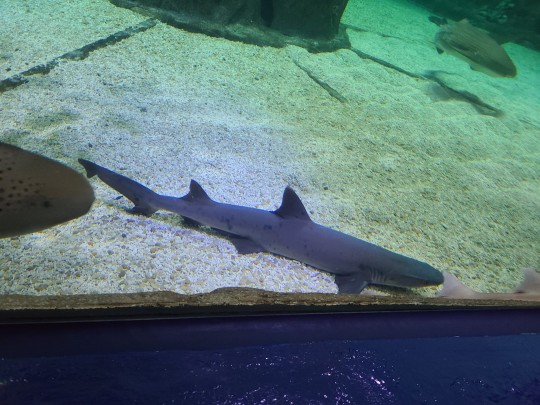
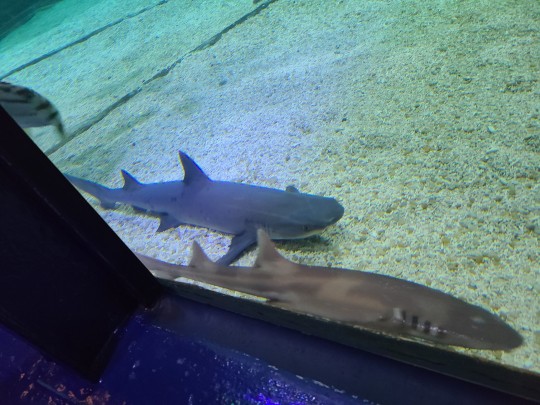


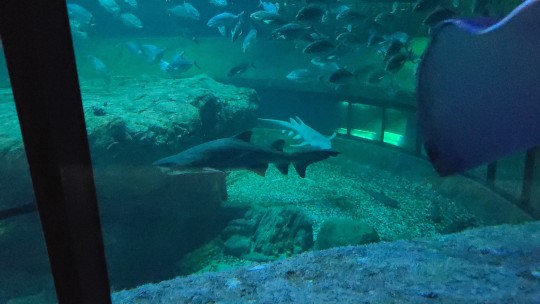
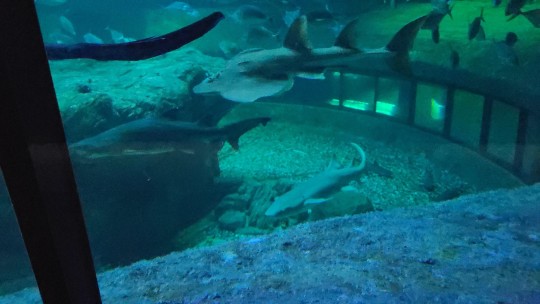
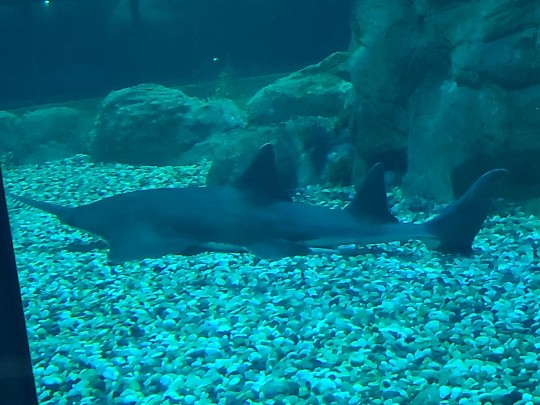
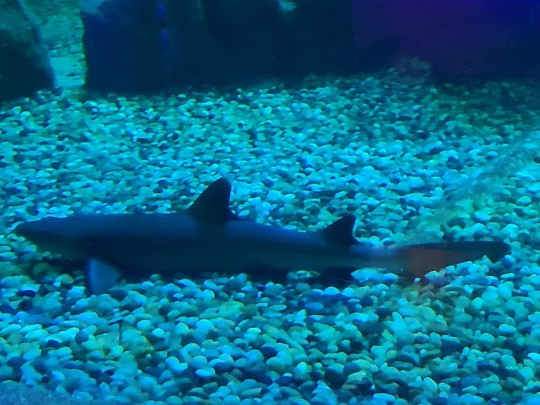


Sharks! I love!! 🦈🦈🦈🦈🦈
8 notes
·
View notes
Text
The Man Who Trained Flipper Now Fights Against Marine Mammal Captivity - Soapboxie
#old television#television history#tv history#documentary#documentaries#animal rights#animal welfare#captivity#marine mammals#miami seaquarium#sea world#marine parks#save the whales#dolphins#save the dolphins#savetheplanet#save the ocean#animal liberation#animal rescue#save animals#animal rights activist#animal activism#animal rehabilitation#wildlife rehab#wildlife rehabilitation#wildlife#animal protection#animal trainer#animal training#animals in art
3 notes
·
View notes
Text
Awesome. The Hudson Bay Complex is one of the worst protected ecosystems in Canada with only 0.7% protected. This will make it 7.7%. Great start.
0 notes
Text
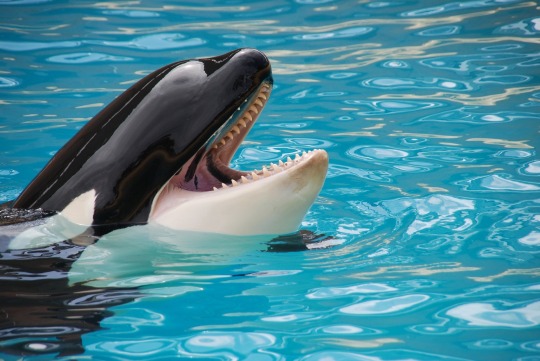
PETA protest at 11:30 a.m. on Thursday near London Bridge
#London Animal Rights Activism#London#animal rights#animal-rights activism#vegan#veganism#PETA#protest#ABTA#marine parks#aquaria#zoos#London Bridge
0 notes
Text
mosses growing in the cracks in heavily used pavement cars rolling over them 76 times a day nothing but respect for our troops
#some of them around here are even putting out spore capsules.#like yes my children and my childrens children shall grow in this Wendy’s parking lot#also makes me think about the perks of microhabitats.#being a crevice parking lot moss means that you get to marinate in a puddle for a long while when it rains#and often you get runoff from the pavement which can contain Numtrient#and protection. don’t have to worry about certain things eating you if bigger things get scared off by cars#many downsides but like. there are worse places to be as a moss
2K notes
·
View notes
Photo

Baby Dugong, Ningaloo reef, Western Australia
#tropical#dugong#western Australia#nature#marine life#sea#ocean#Australia#coral coast#ningaloo marine park#tropics
6K notes
·
View notes
Text

A juvenile elephant seal napping on Point Reyes National Seashore
#seals#pinnipeds#mine#elephant seal#marine mammals#wildlife#nature#nature photography#naturalist#ecology#north america#animals#photography#california wildlife#point reyes#national parks#national park#seal#wildlife biology#marine biology#marine animals#marine life#marine biologist#California#bay area#northern california#norcal#ecologist#wildlife biologist#ocean
222 notes
·
View notes
Text
Crystal Palace Field Trip Part 2: Walking With Victorian Dinosaurs
[Previously: the Permian and the Triassic]
The next part of the Crystal Palace Dinosaur trail depicts the Jurassic and Cretaceous periods. Most of the featured animals here are actually marine reptiles, but a few dinosaur species do make an appearance towards the end of this section.

Although there are supposed to be three Jurassic ichthyosaur statues here, only the big Temnodontosaurus platyodon could really be seen at the time of my visit. The two smaller Ichthyosaurus communis and Leptonectes tenuirostris were almost entirely hidden by the dense plant growth on the island.

Ichthyosaurs when fully visible vs currently obscured
Left side image by Nick Richards (CC BY SA 2.0)
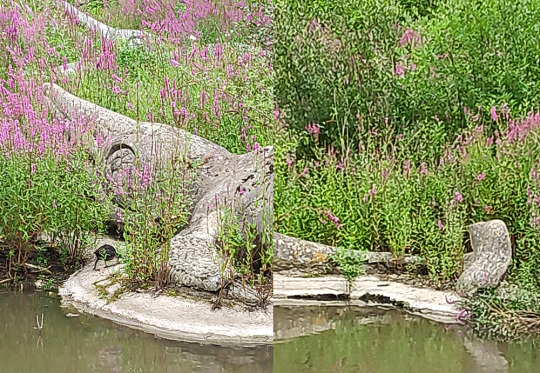
Head, flipper, and tail details of the Temnodontosaurus. A second ichthyosaur is just barely visible in the background.
Ichthyosaurs were already known from some very complete and well-preserved fossils in the 1850s, so a lot of the anatomy here still holds up fairly well even 170 years later. They even have an attempt at a tail fin despite no impressions of such a structure having been discovered yet! Some details are still noticeably wrong compared to modern knowledge, though, such as the unusual amount of shrinkwrapping on the sclerotic rings of the eyes and the bones of the flippers.

———

Arranged around the ichthyosaur, three different Jurassic plesiosaurs are also represented – “Plesiosaurus” macrocephalus with the especially sinuous neck on the left, Plesiosaurus dolichodeirus in the middle, and Thalassiodracon hawkinsi on the right.
They're all depicted here as amphibious and rather seal-like, hauling out onto the shore in the same manner as the ichthyosaurs. While good efforts for the time, we now know these animals were actually fully aquatic, that they had a lot more soft tissue bulking out their bodies, and that their necks were much less flexible.

———
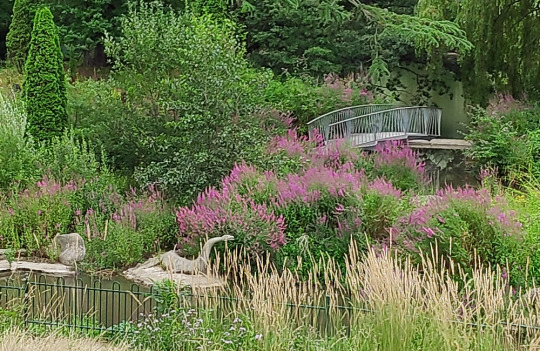
The recently-installed new pivot bridge is also visible here behind some of the marine reptiles.
———

Positioned to the left of the other marine reptiles, this partly-obscured pair of croc-like animals are teleosaurs (Teleosaurus cadomensis), a group of Jurassic semi-aquatic marine crocodylomorphs.

A better view of the two teleosaurs by MrsEllacott (CC BY-SA 4.0)
The Crystal Palace statues have the general proportions right, with long thin gharial-like snouts and fairly small limbs. But some things like the shape of the back of the head and the pattern of armored scutes are wrong, which is odd considering that those details were already well-known in the 1850s.

———
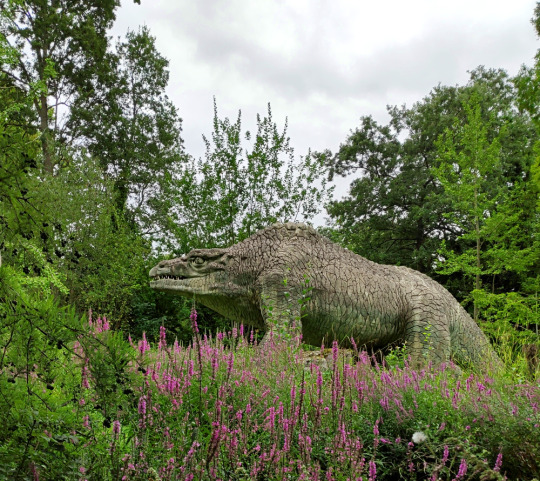
Finally we reach the first actual dinosaur, and one of the most iconic statues in the park: the Jurassic Megalosaurus!
Megalosaurus bucklandi was the very first non-avian dinosaur known to science, discovered in the 1820s almost twenty years before the term "dinosaur" was even coined.
At a time when only fragments of the full skeleton were known, and before any evidence of bipedalism had been found, the Crystal Palace rendition of Megalosaurus is a bulky quadrupedal reptile with a humped back and upright bear-like limbs. It's a surprisingly progressive interpretation for the period, giving the impression of an active mammal-like predator.
This statue suffered extensive damage to its snout in 2020, which was repaired a year later with a fiberglass "prosthesis".

———
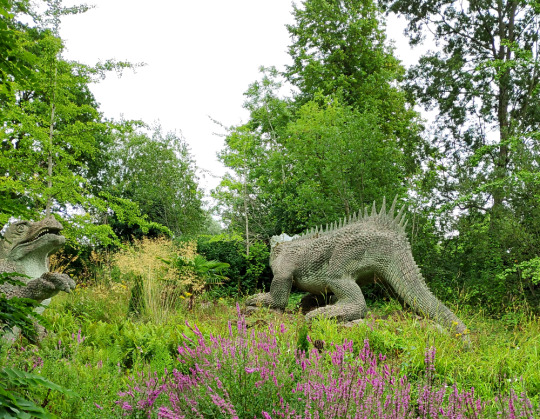
Reaching the Cretaceous period now, we find Hylaeosaurus (and one of the upcoming Iguanodon peeking in from the side).
Hylaeosaurus armatus was the first known ankylosaur, although much like the other dinosaurs here its life appearance was very poorly understood in the early days of paleontology. Considering how weird ankylosaurs would later turn out to be, the Crystal Palace depiction is a pretty good guess, showing a large heavy iguana-like quadruped with hoof-like claws and armored spiky scaly skin.
It's positioned facing away from viewers, so its face isn't very visible – but due to the head needing to be replaced with a fiberglass replica some years ago, the original can now be seen (and touched!) up close near the start of the trail.


———

Two pterosaurs (or "pterodactyles" according to the park signs) were also supposed to be just beyond the Hylaeosaurus, but plant growth had completely blocked any view of them.
Although these two statues are supposed to represent a Cretaceous species now known as Cimoliopterus cuvieri, they were probably actually modeled based on the much better known Jurassic-aged Pterodactylus antiquus.
A second set of pterosaur sculptures once stood near the teleosaurs, also based on Pterodactylus but supposed to represent a Jurassic species now known as Dolicorhamphus bucklandii. These statues went missing in the 1930s, and were eventually replaced with new fiberglass replicas in the early 2000s… only to be destroyed by vandalism just a few years later.
(The surviving pair near the Hylaeosaurus are apparently in a bit of disrepair these days, too, with the right one currently missing most of its jaws.)

Image by Ben Sutherland (CC BY 2.0)
The Crystal Palace pterosaurs weren't especially accurate even for the time, with heads much too small, swan-like necks, and bird-like wings that don't attach the membranes to the hindlimbs. Hair-like fuzz had been observed in pterosaur fossils in the 1830s, but these depictions are covered in large overlapping diamond-shaped scales due to Richard Owen's opinion that they should be scaly because they were reptiles.
But some details still hold up – the individual with folded wings is in a quadrupedal pose quite similar to modern interpretations, and the bird-like features give an overall impression of something more active and alert than the later barely-able-to-fly sluggish reptilian pterosaur depictions that would become common by the mid-20th century.

(Much like the statues themselves, the "modern" reconstruction above is based on Pterodactylus rather than Cimoliopterus)
———

The last actual dinosaurs on this dinosaur trail are the two Cretaceous Iguanodon sculptures. At the time of my visit they weren't easy to make out behind the overgrown trees, and only the back end of the standing individual was clearly visible.

Named only a year after Megalosaurus, Iguanodon was the second dinosaur ever discovered, and early reconstructions depicted it as a giant iguana-like lizard.
The Crystal Palace statues depict large bulky animals, one in an upright mammal-like stance and another reclining with one hand raised up. (This hand is usually resting on a cycad trunk, but that element appeared to be either missing or fallen over when I was there.)
Famously a New Year's dinner party was held in the body of the standing Iguanodon during its construction, although the accounts of how many people could actually fit inside it at once are probably slightly exaggerated.
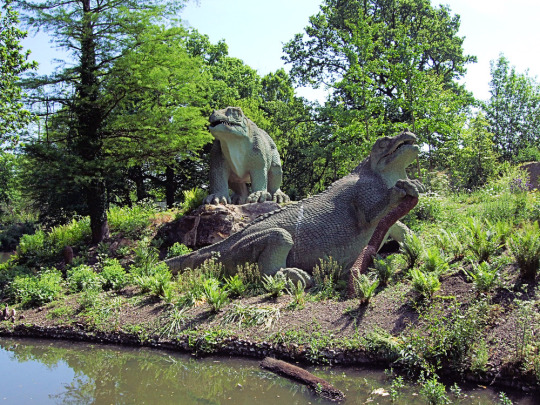
A clearer view by Jim Linwood (CC BY 2.0)
Considering that the skull of Iguanodon wasn't actually known at the time of these sculpture's creation, the head shape with a beak at the front of the jaws is actually an excellent guess. The only major issue was the nose horn, which was an understandable mistake when something as strange as a giant thumb spike had never been seen in any known animal before.

(The fossils the Crystal Palace statues are based on are actually now classified as Mantellisaurus atherfieldensis, but the "modern" reconstruction above depicts the chunkier Iguanodon bernissartensis.)
———
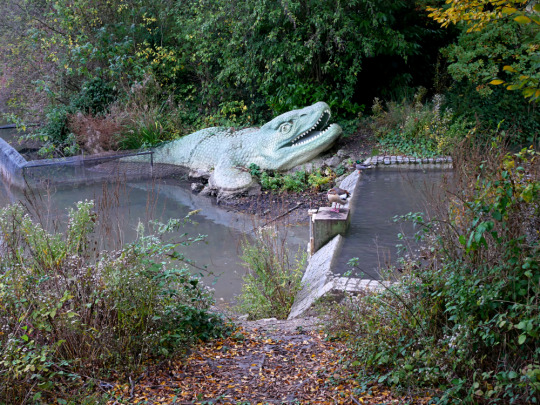
Image by Doyle of London (CC BY-SA 4.0)
I also wasn't able to spot the Cretaceous mosasaur on the other side of the island due to heavy foliage obscuring the view.
Depicting Mosasaurus hoffmannii, this model consists of only the front half of the animal lurking at the water's edge. It's unclear whether this partial reconstruction is due to uncertainty about the full appearance, or just a result of money and time running out during its creation.
The head is boxier than modern depictions, and the scales are too large, but the monitor-lizard like features and paddle-shaped flippers are still pretty close to our current understanding of these marine reptiles. It even apparently has the correct palatal teeth!

Next time: the final Cenozoic section!
#field trip!#crystal palace dinosaurs#retrosaurs#i love them your honor#crystal palace park#crystal palace#ichthyosaur#plesiosaur#teleosaurus#crocodylomorpha#marine reptile#megalosaurus#theropod#hylaeosaurus#ankylosaur#iguanodon#ornithopoda#ornithischia#dinosaur#pterodactyle#pterodactylus#pterosaur#mosasaurus#mosasaur#paleontology#vintage paleoart#art
445 notes
·
View notes
Photo
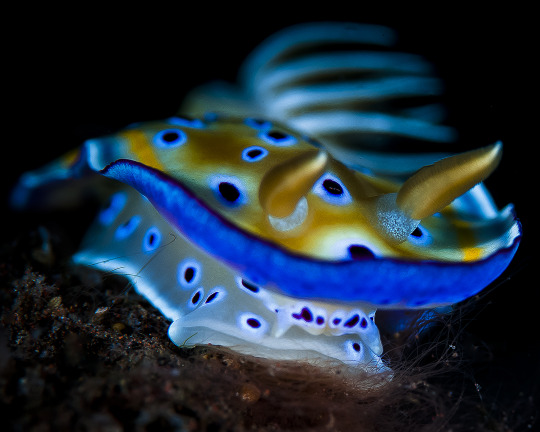
Goniobrachus geminus Nudibranch
Tulamben, Bali, Indonesia
Photo Credit: Oscar Montferrer
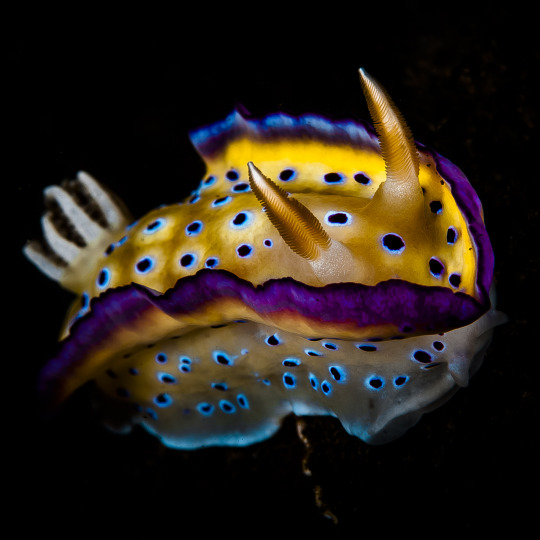
Goniobrachus kuniei Nudibranch - Komodo National Park, Indonesia
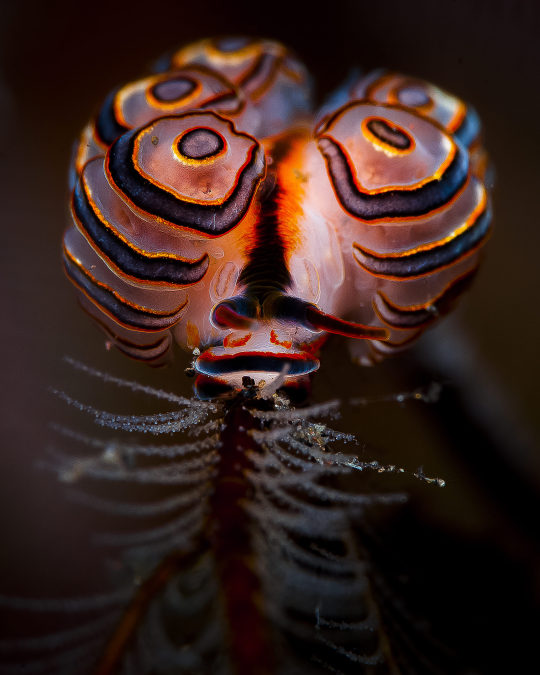
Doto greenyamieri Nudibranch - Amed, Bali, Indonesia
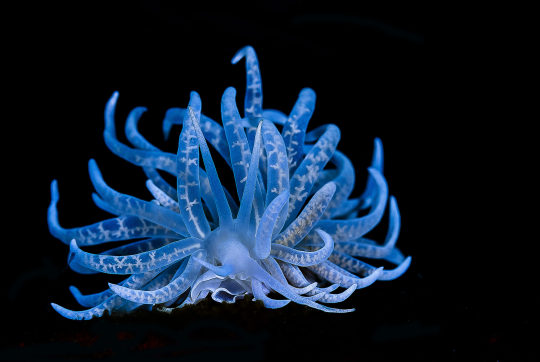
Phyllodesmium iriomotense Nudibranch - Amed, Bali, Indonesia
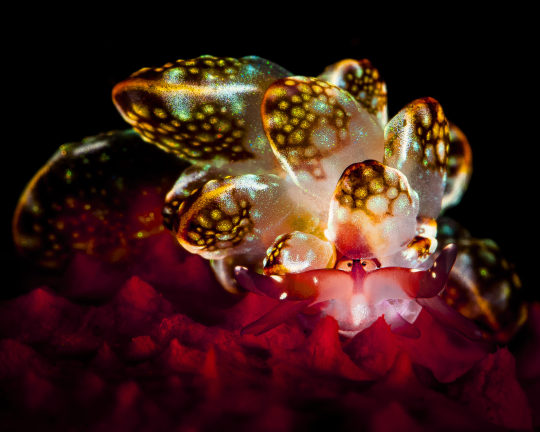
Cyerce kikuterobabai Nudibranch
#oscar montferrer#photographer#goniobrachus geminus#nudibranch#marine#tulamben#bali#indonesia#nature#goniobrachus kuniei#komodo national park#doto greenyamieri#amed#phyllodesmium iriomotense#cyerce kikuterobabai
242 notes
·
View notes
Text




Paris Opera Ballet
Casse-noisette rehearsal
photo Agathe Poupeney
#ballet#ballerina#danseur#etoile#paris opera ballet#rehearsal#nutcracker#casse-noisette#heloise bourdon#sae eun park#ines mcintosh#thomas docquir#mathias heymann#marc moreau#paul marque#marine ganio#I can’t even tell you how excited I am for Marine this season!#because like yeah casting the young and coming dancers in their early 20s is somehow common thing#every AD does it#searching for their new talent#but Marine is way in her 30s and now it seems new opportunities are coming her way#and she more than deserves it!#she is such a musical dancer!#runs in the familly I guess?
100 notes
·
View notes
Text


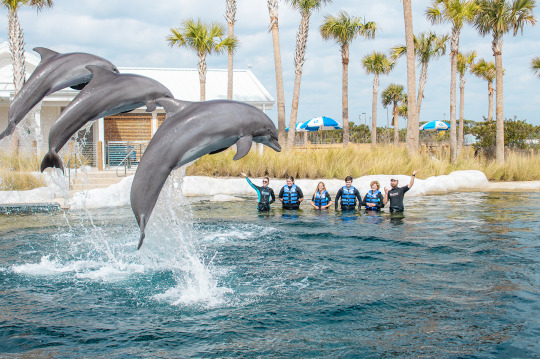
This month, Gulfarium Marine Adventure Park in Fort Walton Beach, Florida debuted its brand new, $30 million dolphin complex, Dolphin Oasis. The 2.2 acre, 1-million gallon habitat replaced the park’s existing dolphin enclosure, which was constructed in the 1950s. I can’t tell you how wonderful it is to see facilities like Gulfarium and the Brookfield Zoo investing time and money into improving the lives of their cetaceans instead of shuffling them out.
In other fantastic news, the park announced that the original 300,000 gallon habitat will be renovated and converted to a manatee rehabilitation center, addressing a critical need for the iconic Florida species. The park plans to begin receiving manatees this fall.

#I really want to visit this little park#if they can put millions into their animals then so can the much bigger places#*stares intensely*#dolphins#cetaceans#marine mammals#gulfarium marine adventure park#aquariums#animal welfare
53 notes
·
View notes
Text
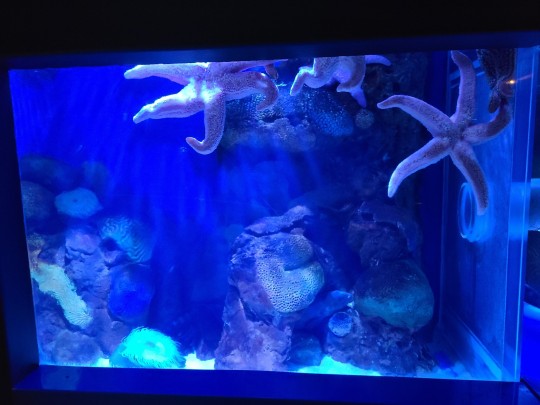
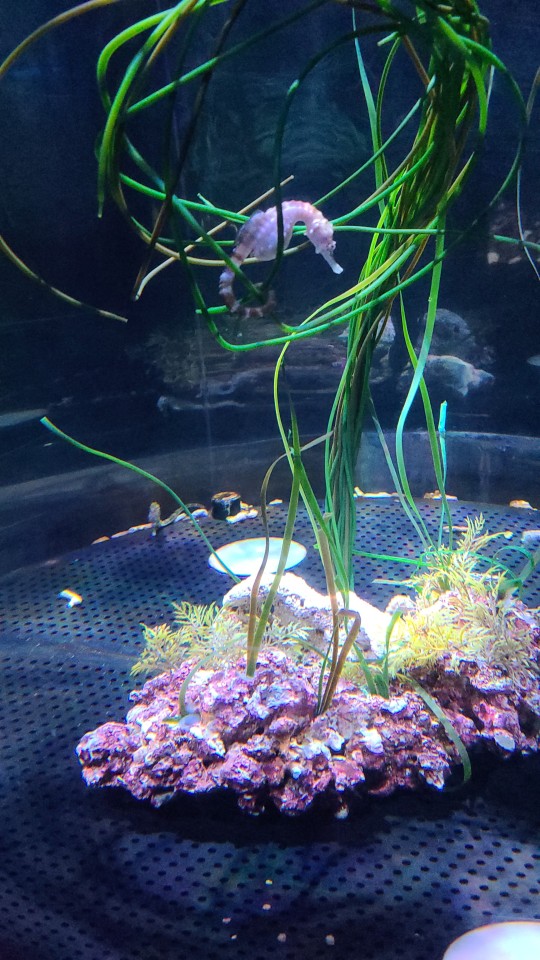


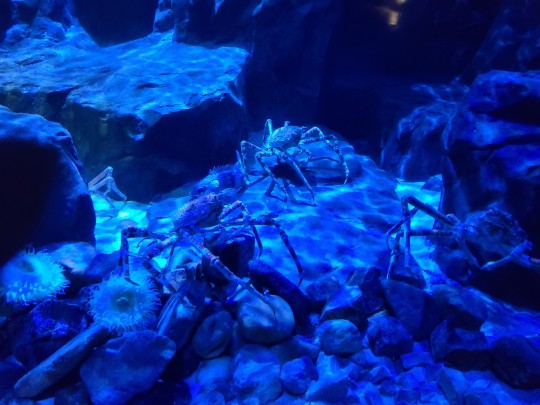
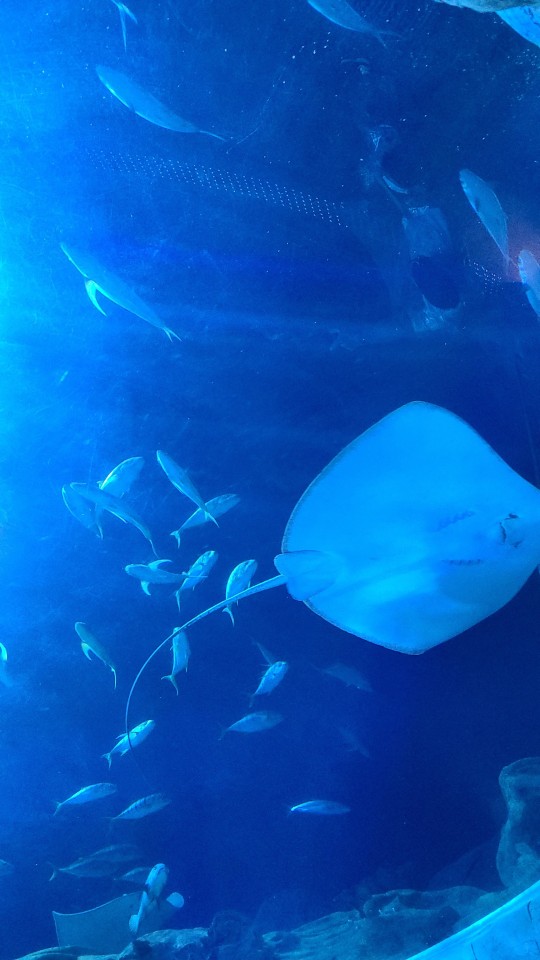
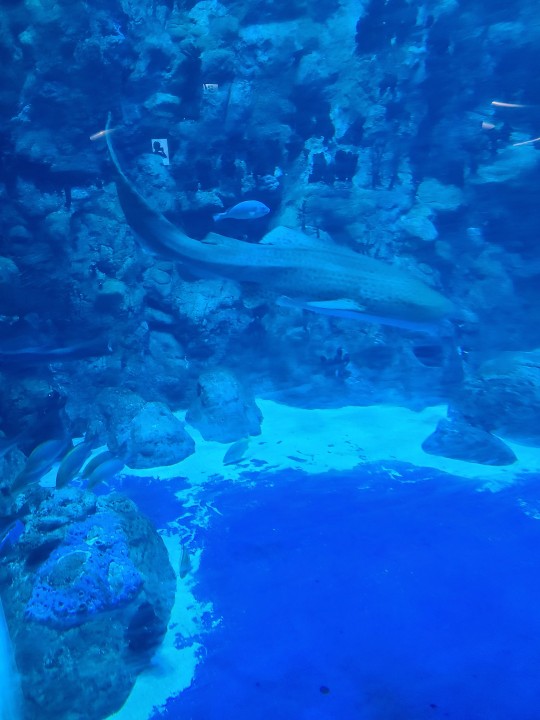
2022.08.11 - The Grand Aquarium, Ocean Park, Hong Kong
5 notes
·
View notes
Video
Breaching Humpback Whale (Megaptera novaeangliae) by Gregory "Slobirdr" Smith
Via Flickr:
On this summer's trip to Alaska, we were again fortunate enough to have calm seas and clear weather out of Seward on a Kenai Fjords tour.
#Humpback Whale (Megaptera novaeangliae)#whale#breaching#Common Murre and Humpback Whale#Kenai Fjords National Park#Northwestern Glacier#marine mammal#nature#wildlife#flickr
48 notes
·
View notes
Text
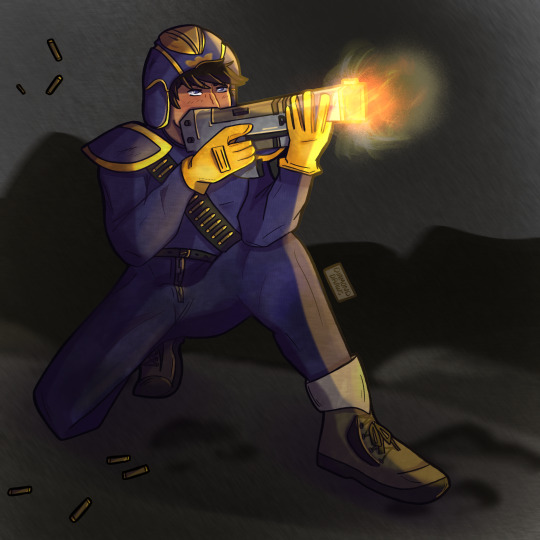
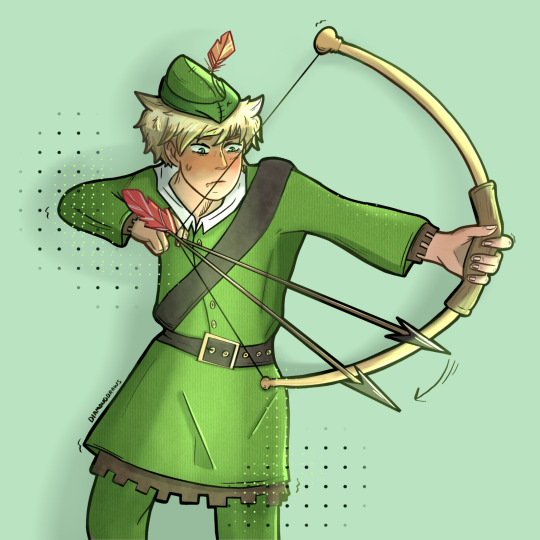
Something about drawing South Park characters in their alters makes me happy
#south park fanart#my art#sp catg#Craig tucker#tweek tweak#marine Craig#south park phone destroyer#fanart#robinhood tweek#robin hood tweek#phone destroyer#marine Craig tucker#creek#sp creek#south park creek
51 notes
·
View notes
Text
I love how fucking dumb the jurassic park movies are.
Like, in jurassic world 2 we find out that the mosasaur tank just has a big gate that leads out into the ocean.
That tank could've been anywhere on the island, but no, have it set up so that in the event of a mechanical failure, the ancient ocean kaiju can just fuck off into the sea and do anything it wants.
Amazing.
What's a dilophosaur? No one knows. Let's make it into a fucking cobra.
How big are raptors? Fuck it. Make them big as shit and smart too.
youtube
63 notes
·
View notes
